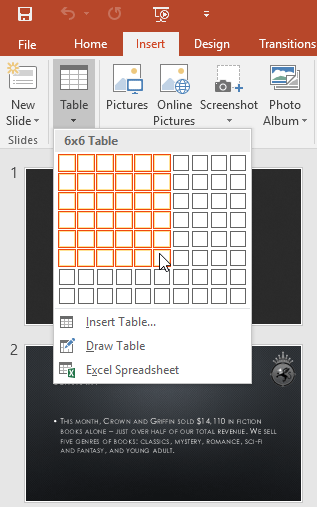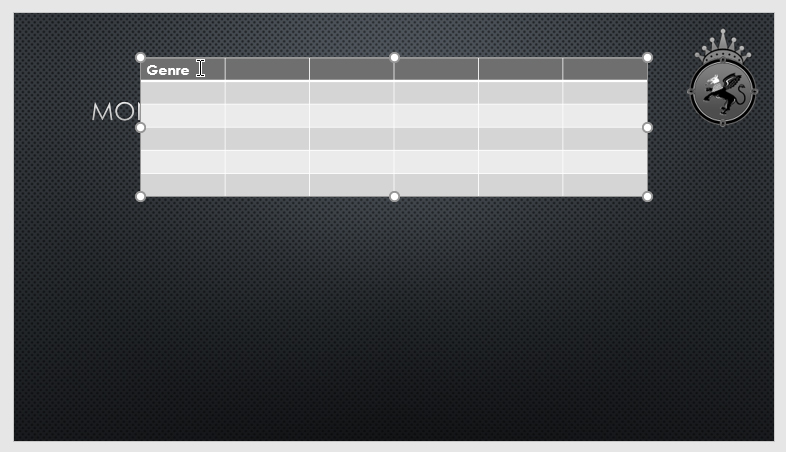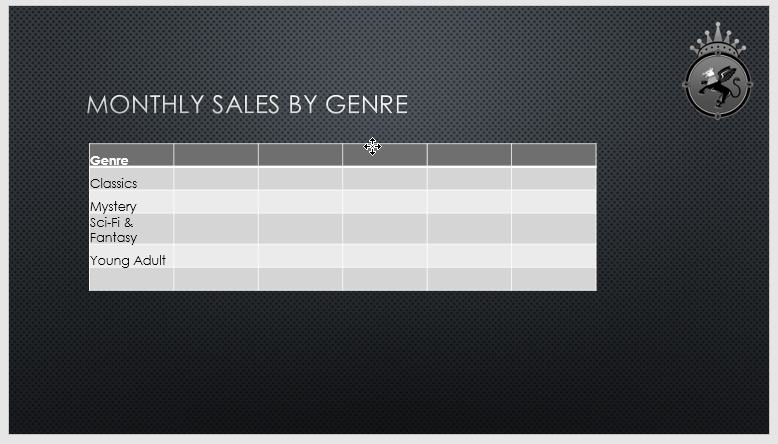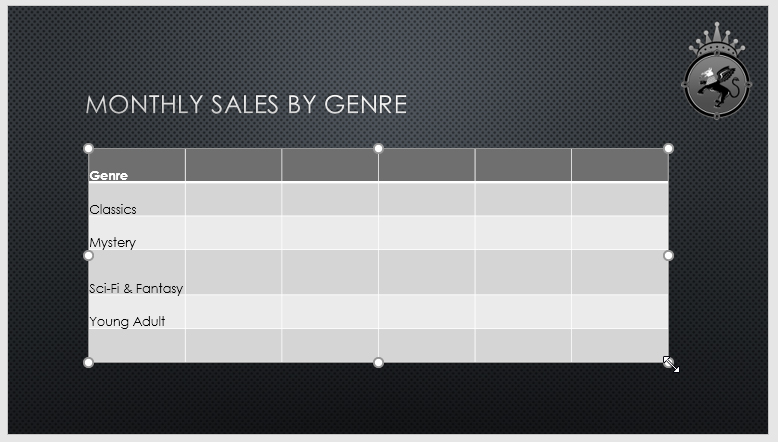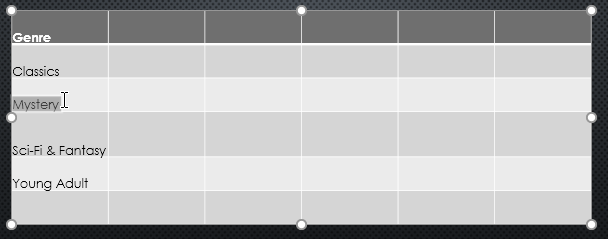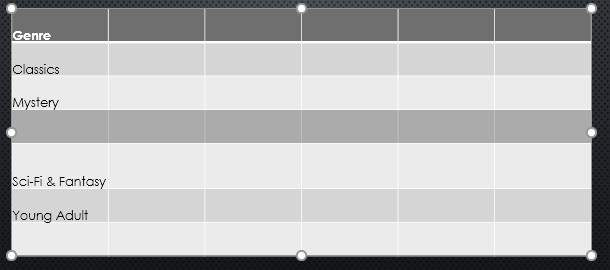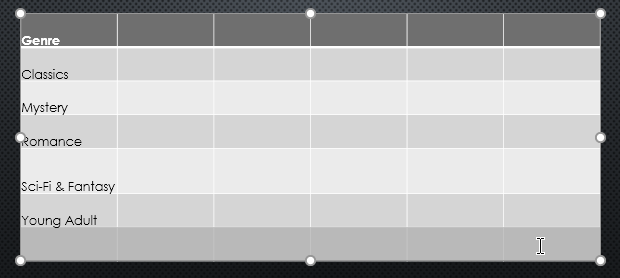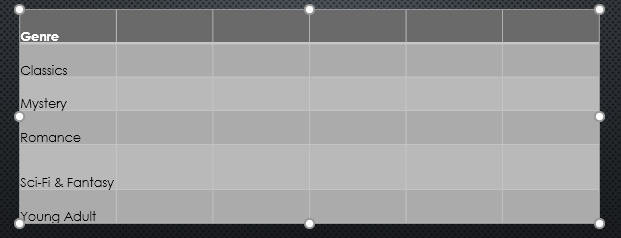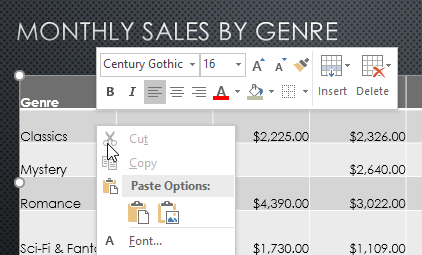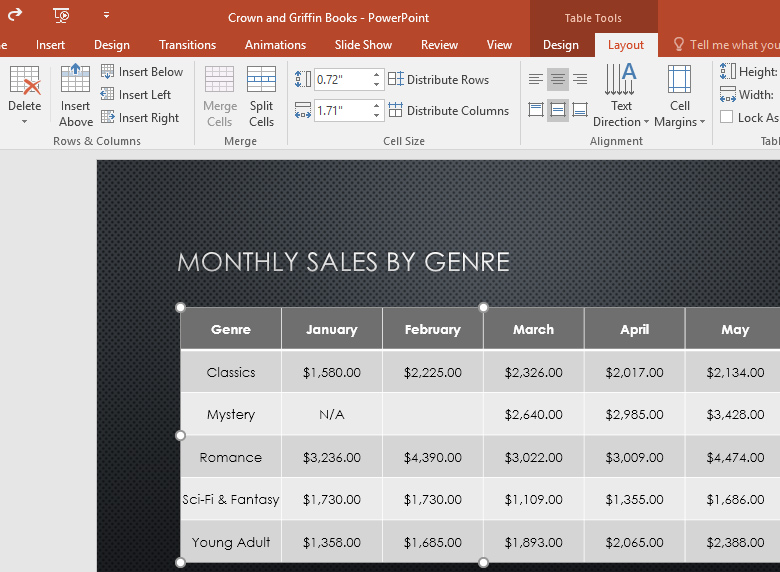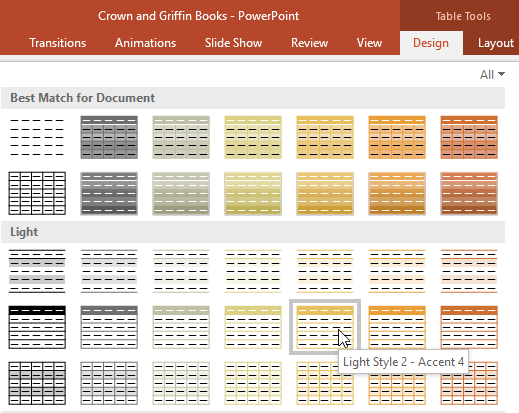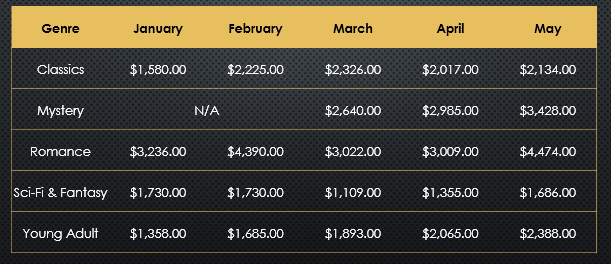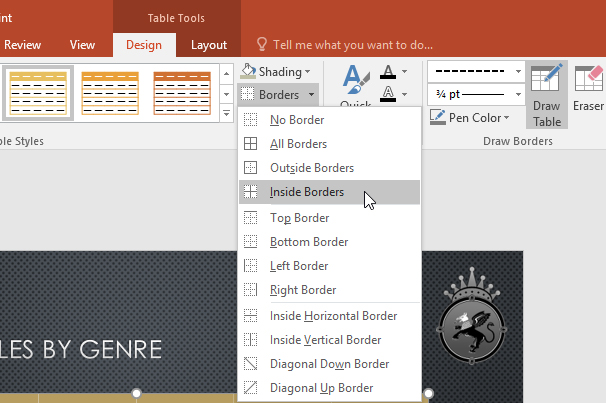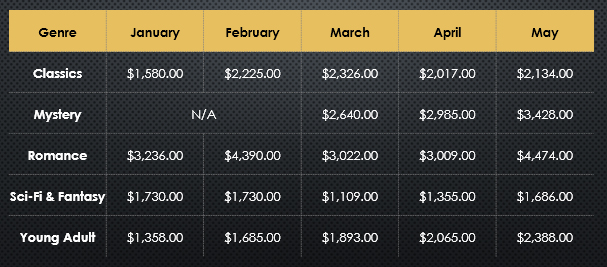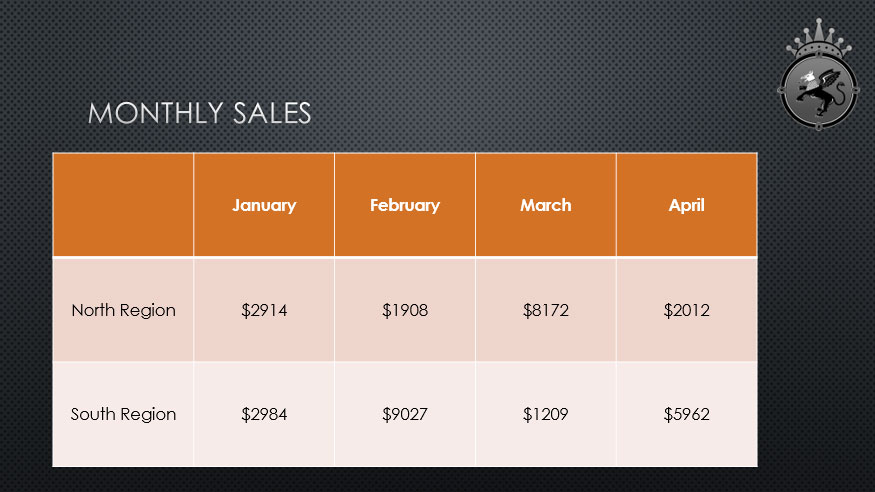/en/powerpoint2016/inserting-audio/content/
Introduction
Tables are another tool you can use to display information in PowerPoint. A table is a grid of cells arranged in rows and columns. Tables are useful for various tasks, including presenting text information and numerical data. You can even customize tables to fit your presentation.
Watch the video below to learn more about inserting tables in PowerPoint.
To insert a table:
- From the Insert tab, click the Table command.
- Hover the mouse over the grid of squares to select the desired number of columns and rows in the table. In our example, we'll insert a table with six rows and six columns (6x6).
- The table will appear on the currently selected slide. In our example, that's slide 3.
- Click anywhere in the table, and begin typing to add text. You can also use the Tab key or the arrow keys on your keyboard to navigate through the table.
You can also insert a table by clicking the Insert Table command in a placeholder.
Modifying tables
PowerPoint includes several options for customizing tables, including moving and resizing, as well as adding rows and columns.
To move a table:
- Click and drag the edge of a table to move it to a new location on a slide.
To resize a table:
- Click and drag the sizing handles until the table is the desired size.
To add a row or column:
- Click a cell adjacent to the location where you want to add a row or column. In our example, we'll select the cell that says Mystery.
- Click the Layout tab on the right side of the Ribbon.
- Locate the Rows & Columns group. If you want to insert a new row, select either Insert Above or Insert Below. If you want to insert a new column, select either Insert Left or Insert Right.
- The new row or column will appear.
To delete a row or column:
- Select the desired row or column. In our example, we'll select the empty row at the bottom of the table.
- From the Layout tab in the Rows & Columns group, click the Delete command, then select Delete Rows or Delete Columns from the menu.
- The selected row or column will be deleted.
You can also access the Insert and Delete commands by right-clicking a table.
To delete a table:
- Click the edge of the table you want to delete, then press the Backspace or Delete key on your keyboard.
Modifying tables with the Layout tab
When you select a table, the Design and Layout tabs will appear on the right side of the Ribbon. You can make a variety of changes to a table using the commands on the Layout tab.
Click the buttons in the interactive below to learn about the different commands on the Layout tab.
Customizing tables
PowerPoint makes it easy to change the look and feel of your tables. For example, you can quickly apply different table styles and customize the table borders.
To apply a table style:
- Select any cell in your table, then click the Design tab on the right side of the Ribbon.
- Locate the Table Styles group, then click the More drop-down arrow to see available table styles.
- Select the desired style.
- The selected table style will be applied.
To change table style options:
You can turn various options on or off to change the appearance of the table. There are six options: Header Row, Total Row, Banded Rows, First Column, Last Column, and Banded Columns.
- Select any cell in your table.
- From the Design tab, check or uncheck the desired options in the Table Style Options group.
These options can affect your table style in various ways, depending on the type of content in your table. You may need to experiment with a few options to find the exact style you want.
To add borders to a table:
You can add borders to help define different sections of a table. Certain table styles may include borders automatically, but it's easy to add them manually or customize them. You can control the border weight, color, and line style for some or all of a table.
- Select the cells where you want to add borders. In our example, we'll select every cell in our table.
- From the Design tab, select the desired Line Style, Line Weight, and Pen Color.
- Click the Borders drop-down arrow, then select the desired border type.
- The border will be added to the selected cells.
- To remove borders, select the desired cells, click the Borders command, and select No Border.
Challenge!
- Open our practice presentation.
- On the last slide, insert a table with 5 columns and 3 rows.
- In the first row, type the name of the months January through May. In the second and third rows, type sale amounts of your choice (for example, $1329).
- Change the style of the table.
- Insert a column on the left side of the table.
- On the second row of the new column, type North Region. On the third row, type South Region.
- Delete the last column.
- Resize your table so it takes up the majority of the slide.
- Center your text horizontally and vertically.
- When you're finished, your slide should look something like this (table style and colors may vary):
/en/powerpoint2016/charts/content/


